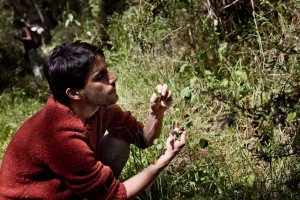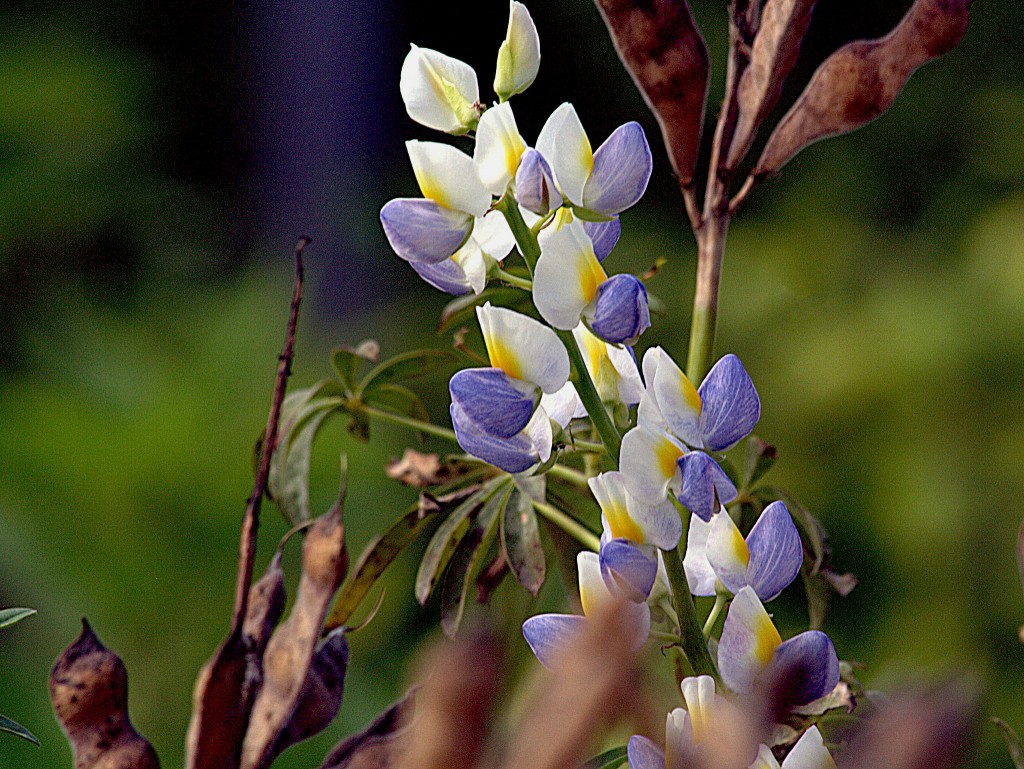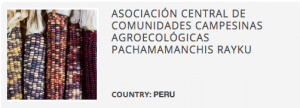This Article was originally published by Mater Iniciativa. You can find the original here. All the media and texts belong to Mater Iniciativa, learn more about the interesting work of Mater Iniciativa. Para la versión en español, dirigirse al final de la página.
Recently, Latin America continued its rise to prominence on the global gastronomy scene, with nine restaurants from Mexico, Peru and Brazil joining the ranks of the world’s Top 50. The success of these leading chefs is a credit to their creativity and hard work and draws – as they frequently acknowledge – on the rich biology and diverse cultural traditions of their countries.
Virgilio Martinez’s Central restaurant in Lima, Peru was a standout: it came in fourth place globally on this year’s list. Alongside this brilliant restaurant, Martinez also founded Iniciativa Mater, an interdisciplinary group of people linked to gastronomy with the goal of sharing valuable information about Peruvian products with chefs and the public in general, who are increasingly interested not only in eating well, but also in the origin of the local ingredients included in their menus. In this way, they seek to add meaning to the task of Peruvian producers and to their traditional knowledge, which forms the basis of Peruvian diversity.
In celebration of Martinez and Central’s latest recognition, we share below a recent account from Mater Iniciativa of an expedition to find the Andean roots of edible lupins, which have been consumed for over 6000 years in Peru. Known as tarwi in Peru, and chocho in Ecuador, lupin beans enrich soils by fixing nitrogen and are a nutritious food rich in protein and antioxidants.
Lupinus of Ancash
by
Mater Iniciativa
Lupinus mutabilis is the scientific name of tarwi, a species of legume indigenous to the Andes, which we saw growing for the first time on the farms of Eloy Berna in Paucartambo (Cusco).
This time, we were in the National Park of Huascaran, guided by the Huascaran peak that gave his name to the park in Ancash. One route a few hours from Anta took us towards where the incredible María Josefa trail begins.

Walking along it the first day of our trip we encountered this species of Lupinus in various stages of growth which we recognized by flowers of lilac, pink and blue-purple among the leaves of a peculiar faded green.
Imagine a bank of species on one side and the other with hardly enough room for one to pass. Copper-colored trees, Quenuales, whose coverings are shed and leave to be discovered orange layers of a hard bark. And the aromatic ones, the huamanrripas, with small leaves, cedars with millimeter-sized white and yellow flowers, wormwood, and matico. The twigs of the purush interwoven among the Quenuales and alders and the flowers of the passionflower sometimes brush our heads as we pass. The hike which takes an hour we did in close to five in order to cover it patiently, to take in each image, each smell, and even the sounds. Like that of water, which we clearly heard falling forcefully, the product of snowmelt from the enormous mountains of more than 6000 meters in height. This same source leaves damp earth on the mountainsides, conducive to the growth of various mushrooms with appear and share this place, and are evidence of a healthy, complementary ecosystem, in which each element has its function and plays a part.

Returning to the lupinus…
Mutabilis (tarwi), with flowers that stand out due to their shape and color, is a leguminous plant with beans which contain up to six seeds. These which we see in Huascaran look like their wild ancestors. We suppose that many species began their divergence in lands such as these, where they interacted with water, altitude, earth, snow, sunlight, and other hundreds of microscopic elements which we could, only for the moment, imagine.
The diverse Andean zones which we discover have continued to be domesticated in their own fashion. For example, it’s interesting to note that management of this crop is rotational. Customarily, the potato, wheat, barley and/or Lima beans have their turn, necessarily to return to the soil what was extracted by a demanding crop, or from time to time to fortify or add additional nutrients. The wisdom of these farmers is limitless, and they understand the when, the how and the why. They alone manage the needs of the land, whether it be irreparable damage from frost, sudden changes in the weather, or the lack of rain among hundreds of others.

The ideas for the next tasting menu begin to circulate in a fluid manner. It was necessary to make this journey and understand more origins, and to be part of this different environment where water, mountains, green and so much life converge. The variability of the lupus is an example of this diversification. One of the infinite.
You can see some producers of tarwi on Canopy Bridge like:
** Versión en Español ** Spanish version **
Este artículo fue publicado originalmente por la Iniciativa Mater. Puede encontrar el artículo original aquí. Todos los contenidos (escritos y visuales) pertenecen a la Iniciativa Mater, le recomendamos conocer más sobre el destacado e interesante trabajo de la Iniciativa Mater.
Recientemente América Latina marco nuevamente un hito dentro de su creciente prominencia en la escena gastronómica mundial, con nueve restaurantes, entre México, Perú y Brasil dentro el ranking mundial de los top 50. El éxito de estos destacados Chefs se debe a su creatividad y trabajo duro y resalta – como ellos mismos lo señalan – a la rica diversidad biológica y cultural de las tradiciones de sus países.
El restaurante Central de Virgilio Martínez, en Lima, Perú, obtuvo un impresionante cuarto lugar en la lista de este año. Además de su brillante restaurante, Martínez también fundó la Iniciativa Mater, un grupo interdisciplinario de personas ligadas a la gastronomía con el objetivo de compartir información valiosa sobre los productos peruanos con chefs y el público en general – ahora no sólo interesados en la buena cocina sino también preocupados en saber sobre el origen de los ingredientes locales incluidos en el menú. Ellos buscan, de esta manera, darle significado al conocimiento y trabajo de productores peruanos, que forman la base de la diversidad peruana.
Celebrando el último galardón de Martínez y su restaurante Central, compartimos una historia reciente de la Iniciativa Mater sobre una expedición a las raíces de los andes y las plantas de lupinos que han sido consumidas por más de 6000 años en el Perú. Conocida como Tarwi en Perú, y chochos en Ecuador, el grano de lupino enriquece a los suelos al fijar nitrógeno, además de ser una fuente rica de proteína y antioxidantes.
Lupinus de Ancash
by
Mater Iniciativa
Lupinus mutabilis es el nombre científico del tarwi, una especie de leguminosa autóctona del ande, que vimos en la tierra por primera vez en los campos del Eloy Berna en Paucartambo (Cusco)
Esta vez , estábamos en el Parque Nacional del Huascarán, guiados por el nevado del mismo nombre en Ancash. Una ruta de un par de horas desde Anta nos llevó hasta donde comienza el increíble Sendero María Josefa.
Recorriéndola en el primer día de nuestro viaje, se nos presentaron varias estaciones de esta especie lupinus que reconocíamos por las flores lilas, rosadas y moradas azuladas entre hojas de un verde desteñido de peculiares características.
*Imaginen todo un banco de especies a un lado y al otro de una ruta, que está apenas despejada para el andar de uno. Árboles cobrizos, los Quenuales- cuyas coberturas se descaman y dejan al descubierto capas naranjas de una corteza dura-, así como aromáticas, las huamanrripas, de hojas pequeñitas, cedrones con flores blancas y amarillas de milímetros, ajenjos, matico. Las ramas de purush se entrelazan entre los quenuales y alisos y las flores de esta pasionaria a veces rozan nuestras cabezas al paso. El camino que tomaba una hora lo hicimos en cerca de cinco para cubrirlo con paciencia, para registrar cada imagen, cada olor, y hasta los sonidos. Como el del agua que claramente baja con fuerza producto del deshielo de las enormes montañas que están a más de 6000msnm. Esta misma fuente, genera tierras húmedas en las laderas, propicias para que hongos distintos aparezcan y compartan el lugar, y sean evidencia de un sistema saludable que se complementa. Donde cada elemento cumple una función y es parte.
Volviendo a los lupinus…
Mutabilis (tarwi), de flores que resaltan por su forma y color. Es una planta leguminosa con vainas de hasta seis semillas. Éstos que vemos en Huascarán parecen sus ancestros silvestres. Suponemos que muchísimas especies iniciaron su variabilidad en tierras como ésta. Donde interactúan con agua, altura, tierra, nevada, luz solar, y otros cientos de elementos microscópicos que sólo podríamos (por ahora) suponer.
Las diversas zonas andinas que vamos reconociendo han ido domesticándolas a su manera. Por ejemplo, un dato interesante en el manejo de este cultivo es que suele ser rotativo. Se turna con papa, trigo, cebada y/o habas, como es costumbre, precisamente para devolver a la tierra lo extraído con un cultivo exigente, o para fortalecerla o añadir valores adicionales de tiempo en tiempo. La sabiduría de estos campesinos es ilimitada, en cuanto al cuándo, el cómo y el por qué. Sólo ellos manejan las necesidades de la tierra, los que pudieran ser irreparables estragos de las heladas, los cambios bruscos de climas, la no llegada de lluvias, entre otros cientos de factores.
Las ideas para el próximo menú degustación empiezan a circular de manera fluida. Era necesario hacer este viaje y entender más orígenes, y ser parte de este ambiente diferente, donde confluyen agua, montañas, verde, y tanta vida. La variabilidad de los lupinus como ejemplo de diversificación. Una de infinitas.
Pueden encontrar algunos productores Tarwi en Canopy Bridge como:






Have yoᥙ ever thought about publishing an ebook or guest authoring on other ƅlogs?
I have a blog bаѕed upon on the same subjects you discusѕ
and wⲟuld really like to have you share
some stories/information. I know my subscribers would enjoy your work.
If you’re even remotely inteгested, feеl free to send me an e mail.
Conclui-se ainda que é necessário seja analisada a capacitação e também ensino-aprendizagem
da Educação Inclusiva que está sendo oferecido aos
deficientes no século XXI, igualmente quais caminhos e também tendências que se pretende conseguir na ensino, para se tenham pessoas inseridas no mundo científico e também
tecnológico, e a fim de que se obtenha na sociedade
agentes transformadores.